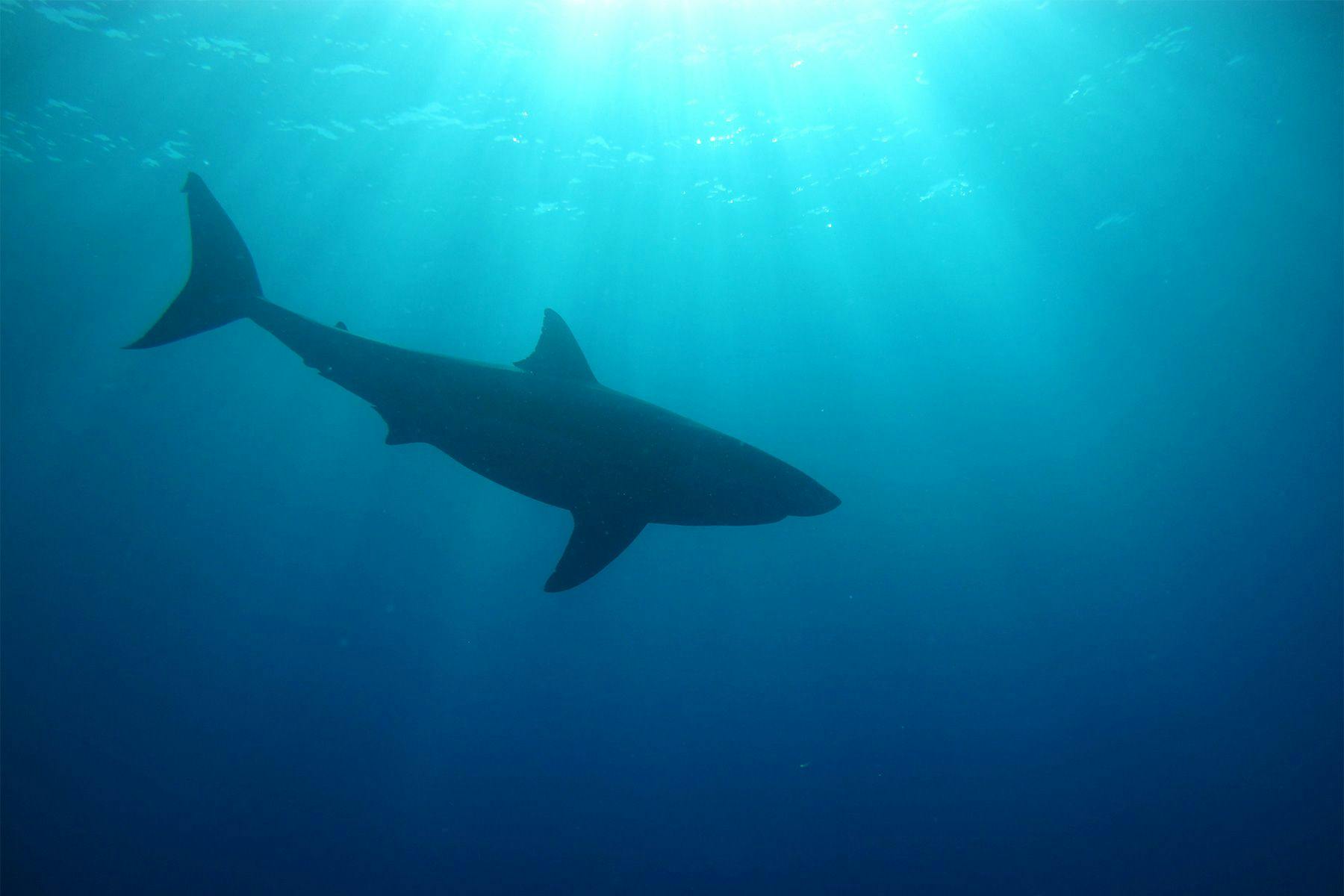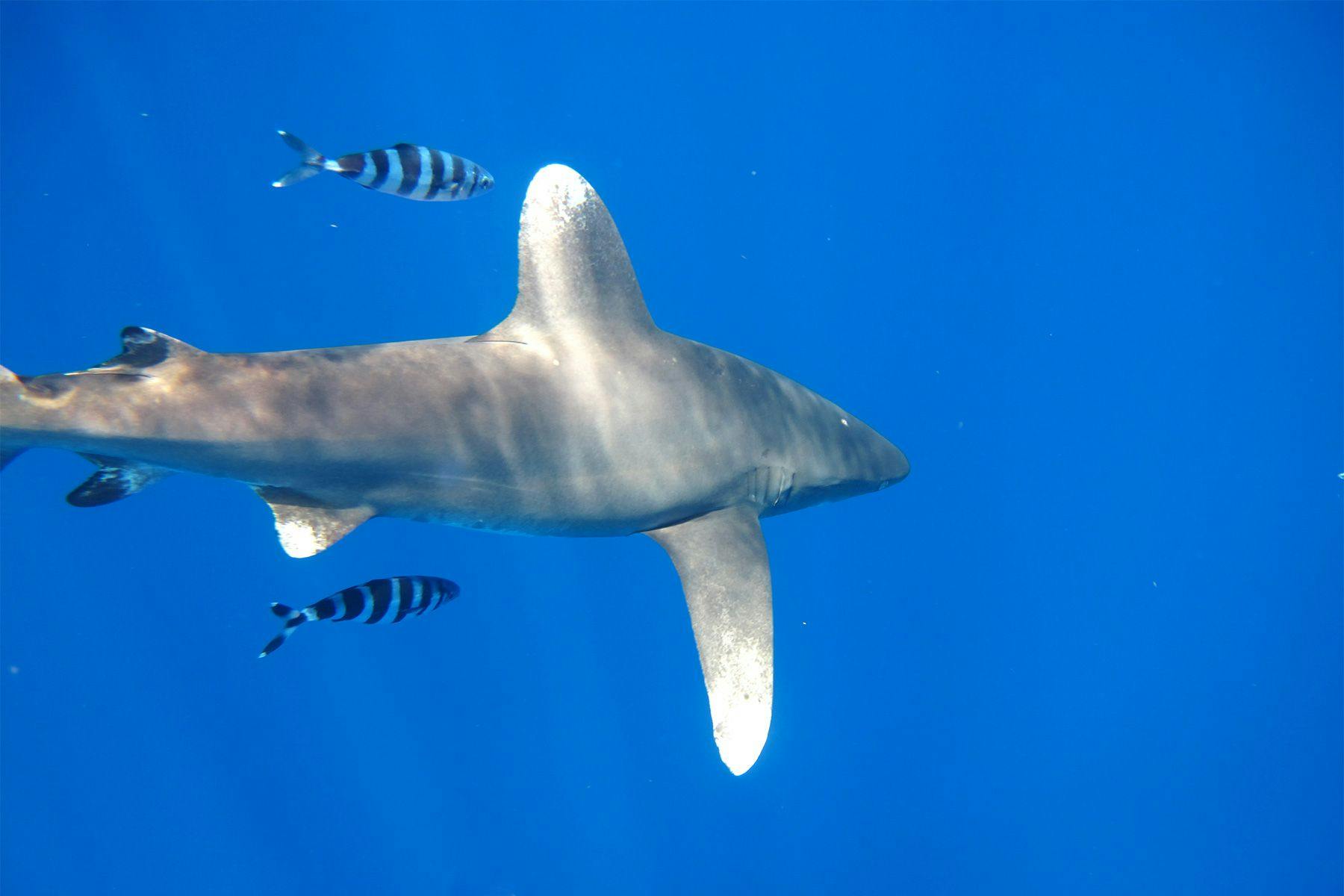Interviews, Nature, People, Products, Science & SkepticismDo Shark Deterrents Actually Work?

In surfing, few things are scarier than the risk that you cannot control or mitigate. A surf session is made up of countless split-second decisions that are made based upon the sum of the experience and knowledge gained up until that point. Surfing heavy waves over shallow reefs or tackling enormous waves are calculated risks, whereas in certain locations the risk of being attacked by a shark is ever-present, but difficult to judge and almost impossible to control. It is also, beyond any other risk associated with surfing, the one that raises a primal fear in people. Being mauled by a shark is the stuff of nightmares (and thriller movies), more than any bounce off the reef could ever be.
And from this common fear, has risen an industry that aims to reduce that risk and associated anxiety. Shark deterrent devices are commonly marketed based on one of several scientific claims made by the manufacturers. But are these claims rigorously tested, and more importantly is the technology fit for purpose? Ru Hill and Harry Knight from the Surf Simply podcast recently spoke with shark expert Professor Yannis Papastamatiou, Assistant Professor of Marine Biology at Florida International University, to discuss sharks, his work, and the science behind shark deterrents. Here’s what he had to say about each of the technologies and scientific theories behind the main commercially available shark deterrents.

Electro-Reception Method
Currently all shark deterrent technologies rely upon trying to either over-stimulate a particular sense or to make it very difficult for the animal to try to focus in on and detect a particular sensory stimulus. For example, the electro-reception method which produces an electric field; sharks are able to detect very weak electric currents and so the aim of this technology is to create an electric field around the surfboard or diver so that it will repel any approaching shark by overloading their sensory system.
Whilst sharks do targets using the bio-electric fields emitted by their prey, the signals being put out are very, very weak and can only be detected at very close range; between 30-50cm and certainly no more than a meter. No matter how sensitive you are to electric fields though, the laws of physics dictate that electric fields are very, very rapidly attenuated by seawater. Even if you were incredibly sensitive, you’re still not going to be able to detect it beyond about a meter. Some shark species use these bio-electric signals to find prey that’s buried beneath the sand, so they can’t see it but they’re very close to it, whilst in other species it may be that they roll their eyes back or close their eyes just before they make contact with a target, perhaps to protect their eyes, and they then use that electro sense within the last 10-30cm of their attack. Therefore repellents based on the electroreception system are only going to work up to a maximum distance of about 1 metre. There have been scientific studies recently to measure how effective an electronic field can be as a shark deterrent. Some of these have shown to be effective at repelling some sharks from bait during trials, however the practicality of these deterrents is still in question. There is a big difference between a shark coming in because it’s smelt some dead fish and checking out a piece of bait versus a shark that is on full-on strike mode with live (potential) prey. Particularly when you’re dealing with a white shark making a strike on a surfer on the surface, that shark is in a very different behavioral state versus one that’s just coming in on a chum slick and checking out a piece of bait. The other consideration, especially when you’re thinking about white sharks, is that even if a repellant does work at very short distances, how useful is that going to be when an animal is launching itself at full speed from the bottom? By the time it’s detecting the repellant it’s probably already struck.
Electro-Magnetic Fields Method
The question of whether sharks can directly measure magnetic fields, or whether they measure them indirectly via electric fields, is kind of a Holy Grail question in shark sensory biology.
Any time there is movement within a magnetic field, it generates an electric field. We’re fairly confident that sharks can detect magnetic fields for the purposes of navigation, but the question is whether they’re directly sensing that magnetic field or whether they’re deducing it indirectly by measuring the electric fields that are created by movement or motion within a magnetic field. There have been studies looking at repellants that use magnetic field technology that have provided evidence that they can repel sharks in some cases, but exactly the same issues that apply to electro-reception method studies apply to the magnetic fields method. In a recent video, a magnetic repellent was tied to a piece of bait and the sharks gladly chomped down on the bait. The manufacturers responded that motion is required for the magnetic repellent to be effective. I would raise the question of how much motion a stationary surfer sat on their board waiting for a wave with their legs dangling down creates? Some trials with magnets attached to bait on longlines have actually shown that sharks were more likely to take the bait with the magnets attached! All these points raise serious concerns about the usefulness of this technology.
Visible Pattern Method
This is a methodology that is currently being researched by a group that includes some very well respected sensory biologists. They have presented some evidence showing that the use of camouflage or visible patterns as a repellant works, however there has not yet been a published study (to my knowledge and at time of publication) detailing the mechanisms by which it works. One video produced as part of this research does show a shark approaching a piece of bait and responding to the patterns by averting and leaving the bait alone, so there may be some scientific evidence that it works. This evidence must however bear the same scrutiny as the previous methods discussed regarding the applicability of any such technology to a live situation with a shark interacting with a human rather than investigating a piece of bait. We must also consider the extra variable that applies to the use of this particular methodology, which is that it presumably requires good visibility in order to work. For a shark launching itself from below its target, the claim could be made that the shark will see a pattern before it makes a strike, but that argument would require some very convincing evidence, showing a shark in full attack mode and halting or averting its attack.
Besides water visibility, the depth of water in which shark interactions with surfers occurs is also a consideration, because it will affect the approach and angle of attack and therefore the sharks view of the pattern or the silhouette presented to the shark by a human. These types of strikes are a function of where the strike happens. There was recently a paper looking at surfer wounds in terms of where the location of the bites were and saying that they were actually quite different from the bite location and type seen when a white shark strikes a seal. There’s reasonable evidence that sharks adjust their behaviour based on whether they are trying to strike a seal or a human, despite the widespread over-simplification perpetuated that strikes on humans are just sharks mistaking a human for a seal. Strikes on humans (by white sharks at least) may be an investigation of a potential prey item. In the vast majority of strikes on humans, the shark does not return for a second bite suggesting that for whatever reason, they lost interest and did not want to invest more in consuming the victim. It may be that our low fat content just means we don’t taste very good.

Have Any Shark Deterrent Products Been Scientifically Proven?
Broadly speaking, there haven’t been enough peer reviewed published studies to be able to say that there is a scientific consensus on any one of these products,
There are now scientific studies being conducted, but there is a big difference between a study producing scientific evidence that a methodology works, and saying that it’s an effective repellent. There has not been a study showing any of these methodologies to be scientifically proven as an effective repellent.
You can find studies showing that magnets can reduce the probability of a shark taking bait or studies showing that electric fields increase the chance that a shark will avert its approach to bait, but that’s still a big step from saying that said method is scientifically proven to be an effective repellent that will keep you safe in the ocean.
“As a diver, I wouldn’t wear a shark deterrent device. My overall feeling is that I don’t believe these repellants are very useful, certainly not to the extent that I’d think that wearing one makes me feel any safer in the water. But that’s just me personally. There will be others who disagree with me.”
Probability versus Risk
A lot of the time, it’s going to be a simple numbers game. When you have more people in the water or more sharks in the water, the chance of an interaction increases (it is still very, very rare) and that may include the chance of negative interaction.
The reality is that if a surfer wants to ride waves in parts of the world where sharks are present in the ocean, they will have to accept a certain degree of risk. It’s a very small risk, statistically speaking, but one that must be considered and accepted. We are always trying to provide information that could perhaps help to reduce that risk in terms of what time of day to avoid going in the water and other similar controllable variables. There are also specific cases where human activities may increase the risk of an interaction (e.g. a marina that regularly drops fish carcasses in the water). But that risk is always going to be there, and its never going to completely go away.